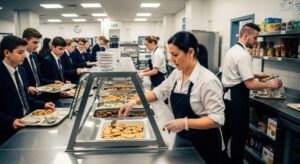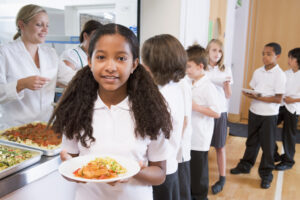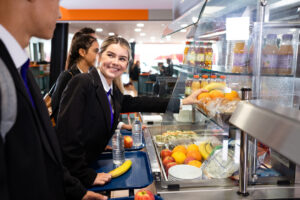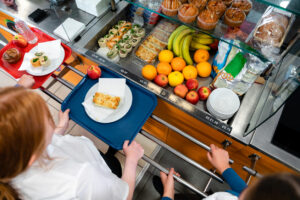The Food Foundation’s flagship Broken Plate report revealed that in order to afford the government recommended healthy diet, the most deprived fifth of the population would need to spend 45% of their disposable income on food, rising to 70% for those households with children. This is unachievable for hundreds of thousands of households.
Furthermore, children from the most deprived groups are nearly twice as likely to be living with obesity by the time they start school.
The connection between household finances and access to good nutrition is clear – and makes school meals even more important. For some children, this may be their only good meal of the day.
Not only does the food need to be nutritious, but also what pupils want to eat.
Schools are operating within a tough climate – the growth in inflation and the 10% increase in the National Living Wage means that food and labour costs for schools are higher than they have been, squeezing budgets further. However, there are some ways to introduce innovative menus to schools, promote inclusivity for all students, and help to bolster school meal uptake.
Innovation
Innovation doesn’t have to mean additional expense. There are smaller and dynamic companies coming into the marketplace that can help a school’s menu really stand out whilst also adhering to nutritional standards and costs. Menu design and development, seasonality, locally-produced food etc. are all things that schools should be exploring with their catering partners, that don’t require big investment. In fact, menu engineering and product swaps that bring new, appealing and interesting dishes to the table can often end up resulting in cost savings.
Fresh eyes
It sounds simple but it can be a case of simply getting fresh eyes on the situation. When you’re living and breathing the catering day in, day out, it can be tricky to identify new pathways that could be taken. Or it might be a case that your catering partner has become stuck in a rut. Call on team members, get fresh ideas, run a poll on students to gain real feedback on the current food provision and implement an action plan and challenge yourself to do things differently.
Break time offering
Many schools report that food sales at break time now match those at lunch. It’s important that the Free School Meals (FSM) allowance can be used at both break and lunch times, ensuring all pupils – including those on FSM – can access filling, nutritious food throughout the day. This approach offers multiple benefits: it reduces queue times by spreading demand across two meal periods, gives pupils more flexibility over their lunch break – allowing time for sports or socialising – and ensures those who missed breakfast can refuel earlier.
Freedom of choice
Grab and go options empower pupils by giving them the freedom to eat outside the dining hall or purchase food to eat later. To streamline costs and procurement, we’re seeing more schools offer sit down meals and grab and go options from the same core menu. For example, a roast dinner can also be served as a hot pork roll with stuffing and apple sauce – providing choice without adding complexity.
The Broken Plate report offers a sobering analysis of the UK’s food system, highlighting significant disparities in access to nutritious food. With healthier foods more than twice as expensive per calorie compared to less healthy options, it’s challenging for low-income families to afford a balanced diet. We can help schools review their catering provision, looking at their procurement, suppliers and operational efficiency to ensure they are providing the best possible meals for children.
The Litmus team











